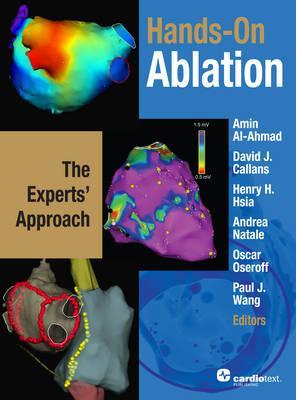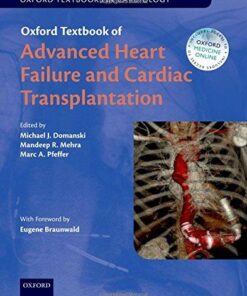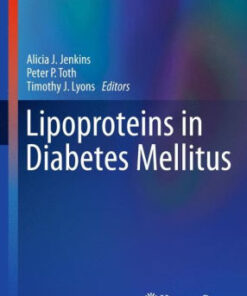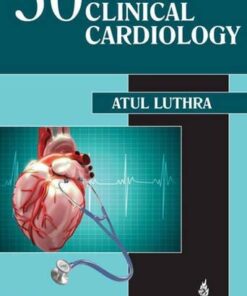(PDF) Hands On Ablation by Amin Al Ahmad, David Callans
$18.00
Download instantly Hands-On Ablation – The Experts’ Approach by Amin Al-Ahmad, David Callans, Henry H. Hsia. It is ebook in PDF format.
ISBN-10: 1935395246 ISBN-13: 9781935395249
Preview
This is the PDF eBook version for Hands-On Ablation – The Experts’ Approach by Amin Al-Ahmad, David Callans, Henry H. Hsia
Table of Contents
Foreword
Preface
Abbreviations
SECTION I: Ablation of Supraventricular Tachycardia
Chapter 1: How to Rapidly Diagnose Supraventricular Tachycardia (SVT) in the Electrophysiology Lab
Chapter 2: How to Ablate Typical and Reverse Atrial Flutter
Chapter 3: How to Ablate Atrial Flutter Postsurgery
Chapter 4: The Ablation of Atrial Tachycardia
Chapter 5: How to Ablate Atrial Tachycardias in Patients with Congenital Heart Disease
Chapter 6: How to Perform Radiofrequency and Cryoablation Ablation for AV Nodal Reentrant Tachycardia
Chapter 7: Ablation of Left-Lateral Accessory Pathways
Chapter 8: Catheter Ablation of Accessory Pathways
Chapter 9: Right-Sided Accessory Pathways
Chapter 10: How to Diagnose, Map, and Ablate AVRT Due to Atriofascicular Conduction Fibers
Chapter 11: How to Ablate Accessory Pathways in Patients with Ebstein’s Syndrome
SECTION II: Ablation of Atrial Fibrillation
Chapter 12: How to Perform a Transseptal Puncture
Chapter 13: How to Utilize ICE for Optimal Safety and Efficacy with AF Ablation
Chapter 14: How to Perform Pulmonary Vein Antrum Isolation for Atrial Fibrillation
Chapter 15: How to Perform Circumferential Ablation for Atrial Fibrillation
Chapter 16: How to Perform Ablation of Atrial Fibrillation by Targeting Complex Fractionated Atrial Electrograms
Chapter 17: How to Ablate Long-Standing Persistent Atrial Fibrillation Using a Stepwise Approach (The Bordeaux Approach)
Chapter 18: How to Ablate Long-Standing Persistent Atrial Fibrillation Using a Stepwise Approach (The Natale Approach)
Chapter 19: How to Use Balloon Cryoablation for Ablation of Atrial Fibrillation
Chapter 20: How to Perform Pulmonary Vein Isolation Using Laser Catheter Ablation
Chapter 21: The Combined Surgical/Endocardial Ablation Procedure for Atrial Fibrillation
Chapter 22: How to Perform a Hybrid Surgical Epicardial and Catheter Endocardial Ablation for Atrial Fibrillation
Chapter 23: How to Ablate the Vein of Marshall
Chapter 24: Diagnosis and Ablation of Atrial Tachycardias Arising in the Context of Atrial Fibrillation Ablation
Chapter 25: How to Perform 3-Dimensional Entrainment Mapping to Treat Post–AF Ablation Atrial Tachycardia/AFL
Chapter 26: Catheter Ablation of Autonomic Ganglionated Plexi in Patients with Atrial Fibrillation
Chapter 27: How to Use Electroanatomic Mapping to Rapidly Diagnose and Treat Post–AF Ablation Atrial Tachycardia and Flutter
Chapter 28: How to Utilize Frequency Analysis to Aid in Atrial Fibrillation Ablation
Chapter 29: Utilization of the Hansen Robotic Catheter Navigation System: The Austin Approach
Chapter 30: How to Perform Atrial Fibrillation Ablation Using Remote Magnetic Navigation
Chapter 31: How to Perform Accurate Image Registration with Electroanatomic Mapping Systems
SECTION III: Ablation of Ventricular Tachycardia
Chapter 32: How to Localize Ventricular Tachycardia Using a 12-Lead ECG
Chapter 33: How to Diagnose and Ablate Ventricular Tachycardia from the Outflow Tract and Aortic Cusps
Chapter 34: How to Diagnose and Ablate Fascicular Ventricular Tachycardia
Chapter 35: How to Map and Ablate Hemodynamically Tolerated Ventricular Tachycardias
Chapter 36: How to Map and Ablate Unstable Ventricular Tachycardia: The University of Pennsylvania Approach
Chapter 37: How to Map and Ablate Unstable Ventricular Tachycardia: The Brigham Approach
Chapter 38: How to Map and Ablate Ventricular Tachycardia Using Delayed Potential in Sinus Rhythm
Chapter 39: How to Utilize Electroanatomical Mapping to Identify Critical Channels for Ventricular Tachycardia Ablation
Chapter 40: How to Use Noncontact Mapping for Catheter Ablation of Ventricular Tachycardia
Chapter 41: How to Use ICE to Aid in Catheter Ablation of Ventricular Tachycardia
Chapter 42: How to Perform an Epicardial Access
Chapter 43: Transcoronary Ethanol Ablation for Ventricular Tachycardia
Chapter 44: How to Perform Epicardial Ablation in Postcardiac Surgery Patients
Chapter 45: How to Perform Endocardial/Epicardial Ventricular Tachycardia Ablation
Chapter 46: How to Ablate Ventricular Fibrillation Arising from the Structurally Normal Heart
Chapter 47: How to Ablate Ventricular Tachycardia in Patients with Congenital Heart Disease
Chapter 48: Catheter Ablation of Ventricular Tachycardia in Sarcoidosis / Hypertrophic Cardiomyopathy
Chapter 49: How to Ablate Ventricular Tachycardia in Patients with Arrhythmogenic Right Ventricular Cardiomyopathy/Dysplasia
Chapter 50: How to Perform Hybrid VT Ablation in the Operating Room
Index




